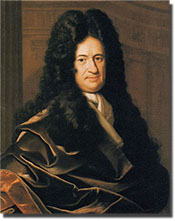Sardinia
Italian Sardegna
island and regione of Italy, second in size only to Sicily among the islands of the western Mediterranean. It lies 120 miles (200 km) west of the mainland of Italy, 7.5 miles (12 km) south of the neighbouring French island of Corsica, and 120 miles (200 km) north of the coast of Africa. The capital is Cagliari.
History.
The dominating feature of the island (some 7,000 examples are said to exist) is the nuraghi: truncated conic structures of huge blocks of basalt taken from extinct volcanoes, built in prehistoric times without any bonding. Most nuraghi are quite small, but a few are obviously fortresses. There is also a nuraghic village near Dorgali with traces of about 80 buildings identified. Expert opinion now gives the dates of the nuraghi at about 1500 to 400 BC. Phoenicians were the island's first recorded settlers, at about 800 BC. Greeks, who raided in the north, were followed by Carthaginians. A brutal Roman occupation began in 238 BC and lasted for 700 years. Vandals, Romans again, Byzantines, and Saracens followed. The island was gained in the 11th century by Pisa and Genoa, which later struggled for domination over it. The house of Aragon gained control of Sardinia in 1326. Spanish domination lasted until 1708 when the island passed to Austria. In 1720 the kingdom of Sardinia was ceded to the house of Savoy and was joined to the Piedmont. During the wars of the late 18th century against revolutionary France, the Piedmont was annexed by France. After the collapse of the Napoleonic empire, the kingdom of Sardinia was given back its territories on the mainland, and during the 19th century it expanded to include almost all of Italy. In 1861 Victor Emmanuel II was proclaimed king of Italy, and the island became part of the unified Italian state. In 1948 Sardinia was given a degree of autonomous government.
Physical and human geography.
The island's relief is dominated by mountains of granite and schist. The highest point is Mount La Marmora (6,017 feet [1,834 m]) in the Gennargentu Massif. The climate is subtropical and Mediterranean. Precipitation ranges from 24 inches (600 mm) on the plains to 39 inches (990 mm) in the mountains. Sardinia's rivers, of which the Tirso and Flumendosa are the most important, are short and full of rapids. Macchia, grasslands mingled with scrub of cistus, lentisk, myrtle, prickly pear, and dwarf oaks, covers most of the uncultivated countryside.
A people of unknown origin, the Sards (and their similarly mysterious language) have inevitably felt the influence of their successive occupiers. The strongest foreign associations are Spanish, contacts with the Iberian Peninsula dating from as early as the 2nd millennium BC. Sardinian, Genoese, Tuscan, Catalan, and Arabic are spoken in various regions; Italian is the lingua franca. Loyalty and hospitality to strangers characterize the Sardinian code of honour. Folklore and craftwork abound on the island. Each town and village holds an annual festival. Most involve feats of horsemanship, exquisitely embroidered costumes, singing, and dancing, often to the accompaniment of the launeddas, a triple clarinet.
Agriculture and mining are the main branches of the economy. Natural pastures cover more than half the area of Sardinia. Sheep and goats are widely raised. Wheat, barley, grapes, olives, cork, and tobacco are produced. Fishing for tuna, lobster, and sardines is important. Sardinia is rich in minerals, including zinc and lead (four-fifths of Italy's production), lignite, fluorite, bauxite, copper, and iron. Processing industries include the smelting of lead and zinc and the production of aluminum and alumina. There are petroleum refineries and petrochemical complexes. Among other industries are food processing, textile and leather production, woodworking, and electrical engineering. Tourism is essentially concentrated on the coast, though the road network has been extended and much improved. The island is connected with continental Italy by both air and sea, but the isolation of the island has preserved many traditions. Area island, 9,194 square miles (23,813 square km). Pop. (1990 est.) 1,657,562.
Copyright © 1994-2002 Encyclopædia Britannica, Inc.
![]()
Sources
- Encylopedia Britannica 2002, Expanded Edition DVD
Web





